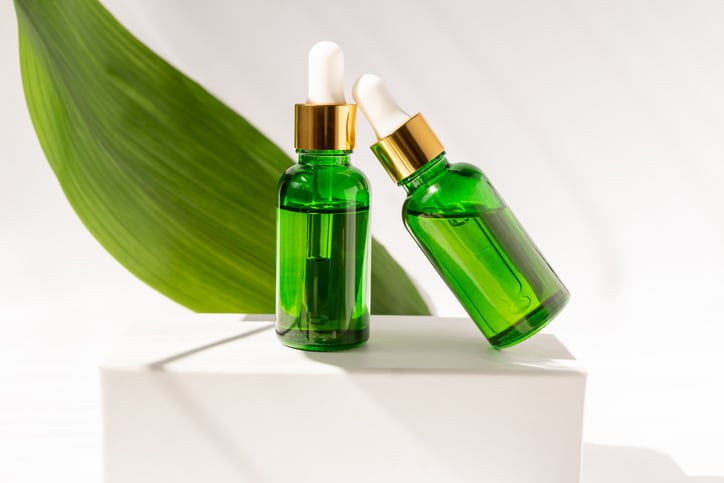The beauty industry had long been invested in sustainability, but with the European Commission’s Green Deal now high on the agenda – aiming to create the first ever climate-neutral continent by 2050 – sustainable goals had now become circular goals. And according to beauty experts, industry was on its way to making circular beauty a mainstream reality, providing it invested in innovation and consumer engagement.
Barbara Olioso PhD MRSC, managing director of The Green Chemist Consultancy, said a critical part of this transition would be seeing a widespread green chemistry mindset take hold.
“Many ingredients used in cosmetics were designed with a linear mindset, i.e. performance at the most affordable cost without thinking about the environment, including the by-products or residues. Today, the linear mindset has caused quite a few environmental challenges and green chemistry is the circular mindset needed to develop innovative green raw materials,” Olioso told CosmeticsDesign-Europe.
“…To me, the use of green chemistry materials is the way forward to future proof the cosmetic industry, especially in view of regulatory restrictions and the Green Deal,” she said.
‘Still a lot to do’ in advancing green chemistry for beauty
Olioso said industry had to develop and work with ingredients made with renewable materials and use efficient processes that were not hazardous to operators. It also had to prioritise processes that resulted in high yielding, high performance products with good end of life – materials that broke down into environmentally benign substances, she said.
There were many raw material companies that had been “on this path for some time”, she said, delivering lots of “innovative ingredients” like biofermentation materials, film formers and multi-functionals to help with cosmetic preservation. Beauty companies were also on-board, with the biggest beauty company in the world, L’Oréal, also pledging to use green chemistry, she said.
But there was “still a lot to do”, Olioso said.

“For example, we need new ways to manufacture solid surfactants for solid shampoos to reduce energy consumption to remove water. We also need new green alternatives to the ingredients used in the manufacturing of nail varnish, as there is not much on the horizon of innovation for this application,” she said.
Another area that needed to be very carefully looked at was preservation, she said – the focus of Olioso’s latest publication, The Green Chemist’s Handbook for Cosmetic Preservation.
Green preservative systems need to advance
“As we are moving towards the circular mindset in general, the preservative system also needs to align with that,” she said.
Annex V of the EU Cosmetics Regulation, which outlined the list of preservatives allowed in cosmetics, was “very unlikely to grow”, Olioso said, so industry had to think smart. “Using green chemistry multi-functionals can help keeping the exposure lower, therefore future proofing Annex V,” she said.
And many companies were already working with multi-functionals to preserve cosmetics, she said, it was just that modern preservation was “more complex” and required “more time and resources”.
Olioso’s handbook mapped out all the multi-functionals available for green preservation, with trade names, regulatory status and information on the pH levels needed to help formulators select suitable green alternatives. Importantly, temperatures and pH levels were discussed to ensure each ingredient and blend to enable antimicrobial protection and activity.
“The book is designed for maximum flexibility, so you can build your own blend, use a ready-made blend (even with Annex V preservatives) or boost your preservative system,” she said.
Overcoming the ‘economic’ hurdle – a transition plan will help
Moving forward, Olioso said the biggest challenge for the beauty to transition to green chemistry would be economics. Manufacturers and brands would have to face and absorb higher costs associated with these green chemistry materials, she said – a difficult transition given preservation had historically been low budget despite being very important for product safety.
“The old-fashioned materials still have a charm in terms of familiarity of use and low cost, even if they are not from renewable sources and therefore far from circular. I think it would be great to have some kind of transition plan to favour green chemistry materials in the long-term, and at the same time educate consumers about the value of circular beauty. L’Oréal’s pledge to green chemistry is going to make things very interesting,” she said.
“…In my opinion, the more we use green chemistry materials, and also develop new technologies, the cheaper they will get, even if not as cheap as petrochemical ingredients.”
Earlier this year, CosmeticsDesign hosted a high-level webinar on Circular Beauty featuring Olioso, alongside Garnier brand president Adrien Koskas; Beauty Kitchen founder Jo Chidley; Cradle-to-Cradle VP of strategy and development Christina Raab; and founder and CEO of TerraCycle Tom Szaky. During the webinar, the panel discussed industry efforts in circularity thus far, some of the key challenges facing progress and considered future opportunities across all areas of the supply chain. If you're interested in catching up on this important conversation, you can watch the webinar on-demand, for free, now.




